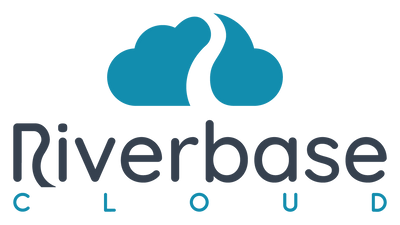The Growing Demand for Marketing Clarity
Transparent marketing solutions are revolutionizing how businesses connect with their customers. At their core, these solutions create an open book approach to marketing—clearly communicating pricing structures, revealing internal processes, and sharing performance metrics that build genuine trust with consumers.
When we talk about transparency in marketing, we're talking about honesty that customers can feel. It's about showing your work, not just your results. It's marketing that respects people's intelligence and rewards their attention with authenticity.
What exactly does this look like in practice? Imagine walking into a store where all prices include taxes and fees upfront, where you can watch your order being prepared, and where staff openly share customer satisfaction scores. That feeling of relief and trust is what transparent marketing solutions create in the digital world.
| Core Element | What It Includes | Business Benefit |
|---|---|---|
| Pricing Transparency | Clear fee structures, no hidden costs | Builds customer trust and confidence |
| Process Visibility | Public roadmaps, behind-the-scenes content | Humanizes brand and demonstrates authenticity |
| Performance Accountability | Real-time reporting, open metrics | Proves value and encourages long-term relationships |
| Data Privacy Compliance | Explicit consent, clear data usage policies | Ensures legal compliance and ethical standing |
Let's be honest—today's consumers have developed a finely-tuned radar for marketing nonsense. They've been burned too many times by hidden fees, misleading claims, and companies that vanish when problems arise. This growing skepticism creates both a challenge and an opportunity for businesses willing to accept openness.
46% of consumers trust online reviews as much as personal recommendations from friends or family. Think about that for a moment. Nearly half of your potential customers place as much faith in strangers' opinions as they do in their inner circle's advice. This isn't just interesting—it's a clear signal that authenticity has become the currency of modern marketing.
This isn’t just a nice idea—there’s real evidence that transparency works. Businesses that adopt transparent marketing solutions often see measurable improvements, like higher lead generation and increased revenue. When companies open up their processes and data, they don’t just build trust—they see a direct impact on their bottom line. Openness isn’t just ethical—it’s good business.
I'm Gary Gilkison, founder of Riverbase Cloud. I've spent years helping businesses implement transparent marketing solutions that find that perfect balance—leveraging AI-powered automation while maintaining the human touch that builds trust. Our approach drives measurable growth while keeping the curtains pulled back on how we achieve those results.
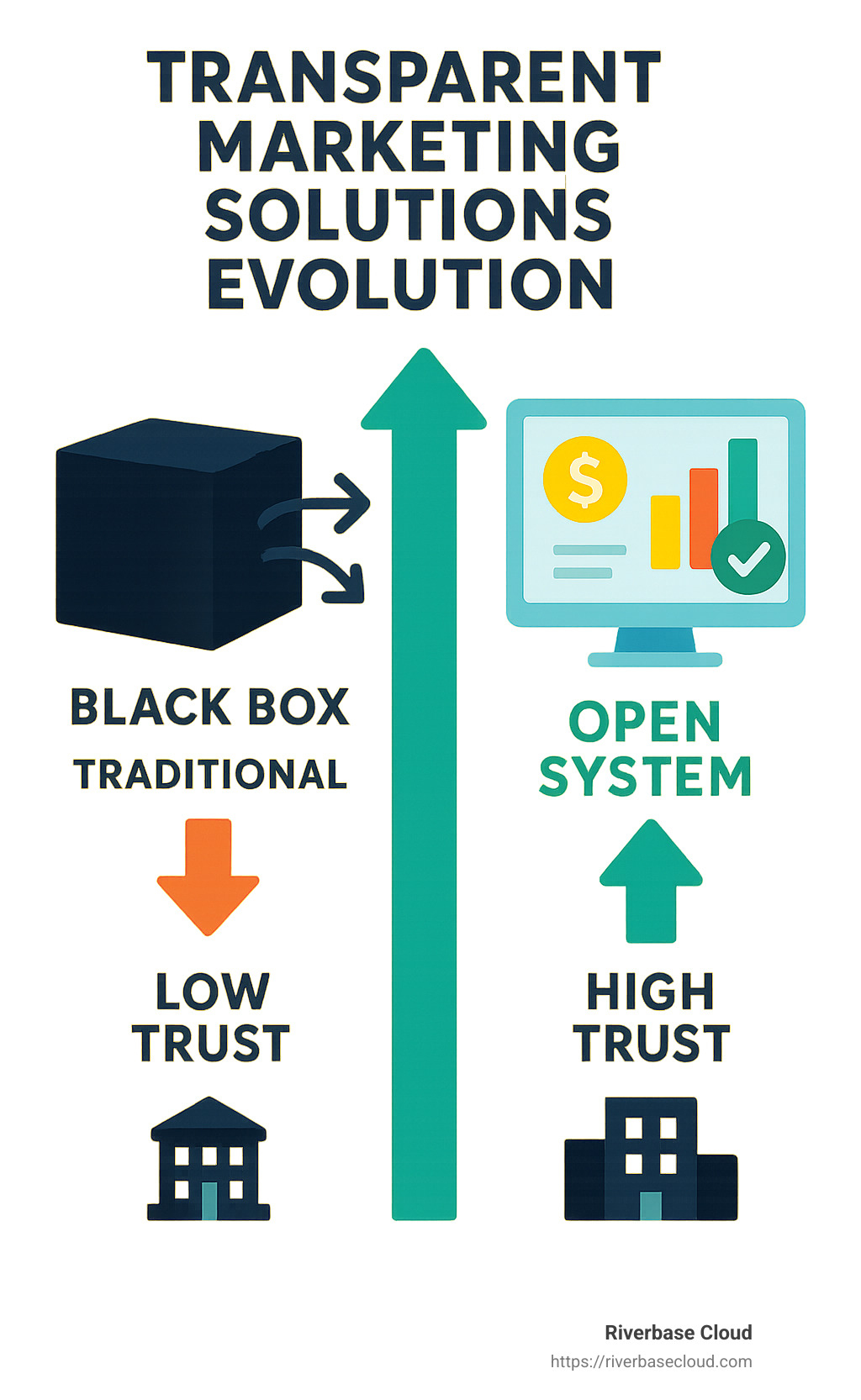
Setting the Stage
The marketing world has experienced nothing short of a revolution in recent years. Three powerful forces have converged to make transparency not just nice-to-have, but essential:
First, data privacy laws have fundamentally reshaped the landscape. GDPR in Europe, CCPA in California, and similar regulations worldwide have changed the rules of engagement. These aren't mere legal problems to jump—they represent a profound cultural shift toward respecting people's digital rights and privacy.
Second, buyer expectations have changed dramatically. Today’s consumers are more informed, equipped with comparison tools, and naturally skeptical. They want to understand not just what they’re buying, but also the story behind it—how products are made, marketed, and measured. In a marketplace crowded with choices, transparency acts as a lifeline, helping brands stand out and earn genuine trust.
Third, we're witnessing the emergence of accountable AI. As artificial intelligence takes a more central role in marketing decisions, there's growing demand to make these systems explainable and transparent. The days of black-box algorithms making unexplainable decisions are fading fast as consumers and businesses alike demand to understand the "why" behind AI recommendations.
At Riverbase Cloud, we've watched this change unfold in real time. Our clients don't just want powerful AI marketing tools—they want to understand how these tools work, why they make certain recommendations, and exactly how performance is measured. This is precisely why our Managed-AI approach emphasizes human expertise working alongside technology—because the most sophisticated AI still needs human wisdom to build genuine trust.
Why Transparency Matters More Than Ever
Remember the days when tech companies could operate behind closed doors with little scrutiny? Those days are long gone. We're now witnessing what industry experts call a "techlash" – a widespread backlash against tech companies that have historically kept their operations hidden from view. This credibility gap isn't limited to big tech; it extends to marketing practices across industries, where consumers have grown increasingly frustrated with hidden fees, mysterious algorithms, and metrics that seem designed to confuse rather than clarify.
The data is clear: consumers are hungry for honesty. Recent surveys show that people increasingly rely on transparent information—like detailed reviews and open business practices—when making decisions. When personal recommendations aren’t always possible, brands that accept openness quickly stand out as trustworthy. Transparency isn’t just a buzzword; it’s the foundation for building real, lasting trust with today’s savvy buyers.

Data privacy compliance has evolved from a box-ticking exercise to a genuine competitive advantage. Even Google, through its Transparency Report, demonstrates how major platforms are responding to this shift by providing greater visibility into their data practices. As regulations continue to evolve – and they certainly will – businesses that have already accepted transparency will find themselves better positioned to adapt quickly.
For small and medium-sized businesses, the stakes are particularly high. Unlike corporate giants with decades of brand equity and million-dollar marketing budgets, smaller companies rely heavily on trust to compete effectively. Transparent marketing solutions offer these businesses a powerful way to level the playing field by demonstrating integrity from day one.
How Transparent Marketing Solutions Build Trust
So how exactly do transparent marketing solutions build this critical trust? It happens through several natural human connections:
First, there's authenticity. When your business opens up about its processes, pricing structures, and performance metrics, you signal something rare in today's market – genuine authenticity. This resonates deeply with today's consumers who have developed finely-tuned radar for detecting polished marketing messages that hide more than they reveal.
Then there's the power of social proof. Transparency enables more authentic testimonials and case studies. When potential customers can see real reviews and unfiltered results, they're far more likely to trust your brand. That 46% trust statistic we mentioned earlier? It shows just how powerful authentic social validation has become.
Transparency also dramatically reduces risk perception. When you're upfront about pricing, honest about limitations, and transparent with reporting, you lower the mental barriers to purchase. This is especially valuable for high-consideration purchases where customers naturally feel more vulnerable.
Finally, there's accountability. When your business publicly shares goals and metrics, you create a form of self-accountability that signals confidence in your products or services. It's like saying, "We believe so strongly in what we offer that we're willing to be measured publicly."
A standout example of transparency is Patagonia’s “Footprint Chronicles” microsite, which openly shares details about their environmental impact and supply chain practices. This approach shows how transparency can move beyond marketing tactics to become a foundational business value.
At Riverbase Cloud, we've seen that transparency isn't just an ethical choice—it's smart business. Our clients who accept transparent marketing solutions consistently outperform those who cling to traditional "black box" approaches. When trust is increasingly scarce, transparency has become the new currency of business success.
Defining Transparent Marketing Solutions in the Age of AI
What exactly does transparency look like in today's AI-powered marketing landscape? At its heart, transparent marketing solutions create an environment where nothing is hidden from view – like a glass house where customers can see everything happening inside.
Transparency isn't optional – it's essential. Modern consumers don't just want to know what they're buying; they want to understand the entire ecosystem behind your business. Let me walk you through what this looks like in practice.
Clear pricing stands as the cornerstone of transparency. Remember the frustration of hidden fees or mysterious charges? Transparent marketing solutions eliminate this pain point entirely. Whether you're using tiered "Good, Better, Best" pricing models or volume discounts, the key is making everything crystal clear upfront. Customers appreciate knowing exactly what they're paying for – no surprises, no fine print.
Process visibility takes transparency a step further. By opening your company's inner workings to customers, you build genuine confidence in your brand. Look at Trello's approach – they publish their product roadmap publicly, allowing users to see exactly what features are coming next. This kind of openness transforms customers from passive buyers into engaged stakeholders who feel part of your journey.
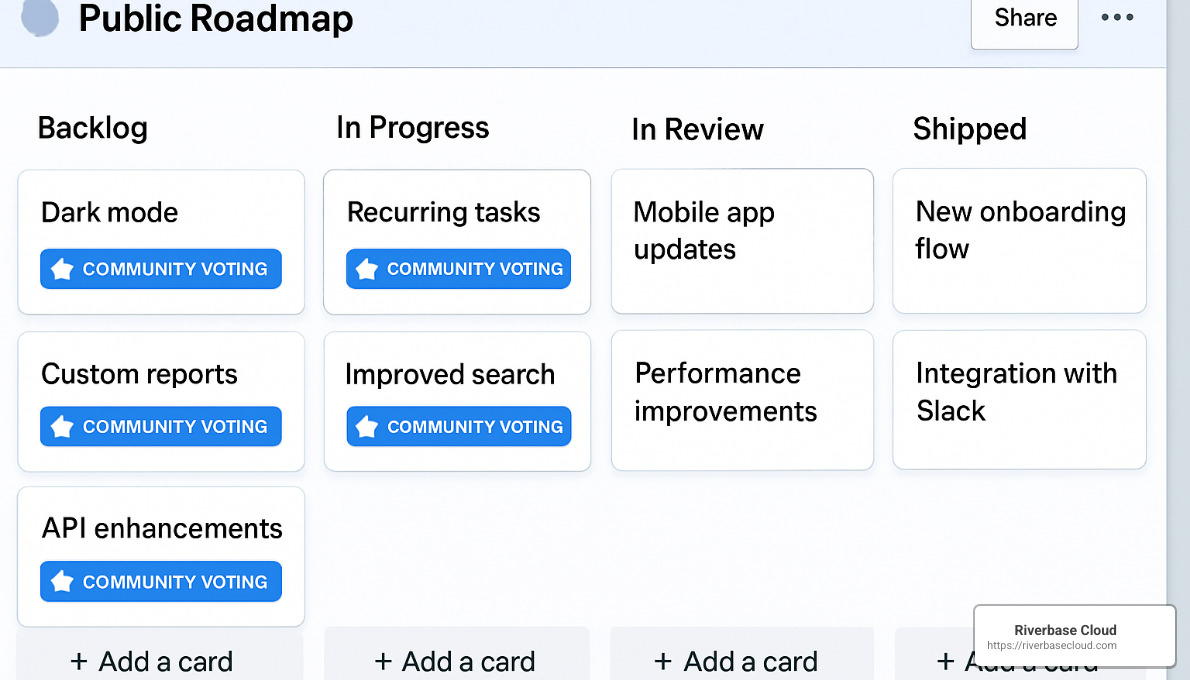
Performance dashboards are the backbone of marketing accountability. Platforms like Clarity and MarketingCloudFX go beyond simple tracking—they give clients real-time access to their results. This shift turns marketing from a “just trust us” game into a transparent, measurable process. When clients can see campaign performance for themselves, trust isn’t just promised—it’s proven.
The final component, ethical AI deployment, has become increasingly important as artificial intelligence reshapes marketing. Being transparent about how your AI systems work – including their data sources, decision-making processes, and potential limitations – helps explain what might otherwise feel like "black box" technology to your customers.
Zendesk is a great example of process transparency in action. Their public status page doesn’t just highlight smooth operations—it also shares real-time uptime, past incidents, and live updates on any issues. By being upfront, even when things aren’t perfect, Zendesk builds trust and reassures customers that they’ll always know what’s happening.
Core Principles or Pillars
The foundation of truly transparent marketing solutions rests on four essential principles that guide everything we do at Riverbase Cloud.
Ethics comes first – always. This goes beyond simply following regulations and extends to embracing moral principles throughout your marketing. It means representing your products honestly, respecting consumer privacy religiously, and maintaining fair pricing practices consistently. When ethics drive your decisions, transparency happens naturally.
Honesty about both strengths and limitations builds authentic connections. As one marketing leader we interviewed put it, "Blog about the wins & losses." This vulnerability might feel counterintuitive, but it creates genuine relationships with customers who appreciate your candor. Perfect companies don't exist – and pretending to be one only creates distance between you and your audience.
Data-driven decisions provide the backbone for credible transparency. When your marketing claims are supported by verifiable metrics rather than vague promises, they carry real weight. This is why platforms like Clarity and Addressable have become so valuable – they transform subjective marketing claims into objective, measurable results that customers can verify themselves.
Real-time reporting demonstrates confidence in your approach. When you're willing to share results as they happen – not just carefully curated highlights after the fact – you show customers you have nothing to hide. This immediacy also allows for quick course corrections when needed, creating a dynamic relationship based on current reality, not past performance.
At Riverbase Cloud, we've woven these principles into the fabric of our Managed-AI solutions. While artificial intelligence powers growth, our human expertise ensures these technologies are implemented ethically and communicated clearly. Our business model reflects our commitment to transparency – flexible arrangements with no long-term contracts required. Clients can cancel anytime without hassle because we believe transparency extends beyond marketing to every aspect of our business relationships.
The Three Pillars of Radical Openness
Pillar 1 – Open Pricing Models
Transparent pricing is perhaps the most fundamental aspect of transparent marketing solutions. It addresses a basic consumer concern: "Am I getting a fair deal?"
Several approaches to transparent pricing have proven effective:
Price Matching: Companies like Best Buy offer price-match guarantees, demonstrating confidence in their pricing and eliminating the need for customers to shop around.
Tiered Options: The "Good, Better, Best" model mentioned in our research provides clarity about what customers get at different price points.
Volume Discounts: Clearly communicating how prices decrease with volume helps customers understand the value proposition for larger purchases.
Upfront Fee Structures: Payment processing companies like those mentioned in our research highlight the importance of eliminating hidden fees. As one company stated, "Transparency is in our name" and backed this claim by processing over $2 billion in transactions without surprise fees.
| Traditional Pricing | Transparent Pricing |
|---|---|
| Hidden fees | All fees disclosed upfront |
| Vague value propositions | Clear explanation of what you're paying for |
| Complex contracts | Simple, understandable terms |
| Surprise charges | No unexpected costs |
| Difficult comparisons | Easy to compare with alternatives |
At Riverbase Cloud, we've found that transparent pricing builds trust from the first interaction. Our clients appreciate knowing exactly what they're paying for, with no hidden costs or surprise fees.
Pillar 2 – Process Visibility
The second pillar of transparent marketing solutions is process visibility—showing customers how you work and what happens behind the scenes.
Trello exemplifies this approach with their public roadmap, where users can see upcoming features and even vote on priorities. This level of openness not only builds trust but also creates a sense of community and co-creation.
Product demos represent another form of process transparency. As our research noted, immersive, interactive virtual demo experiences allow customers to see exactly how products work before committing. This can include AR/VR applications, 3D renderings, or sandbox environments.
Micro-sites dedicated to transparency can be particularly effective. Patagonia's "Footprint Chronicles" shows the environmental impact of their products, while other companies create dedicated spaces to explain their supply chains, manufacturing processes, or business practices.
"Pulling back the curtain" on technical performance also builds trust. Zendesk's status page shows real-time uptime metrics and incident history, demonstrating confidence even when issues arise.
At Riverbase Cloud, we make our processes visible through regular updates, clear project timelines, and open communication channels. Clients can see exactly what we're doing, why we're doing it, and how it connects to their business goals.
Pillar 3 – Performance Accountability
The third pillar of transparent marketing solutions is performance accountability—demonstrating the impact of marketing efforts through clear, verifiable metrics.
Platforms like Clarity provide "marketing diagnostics for leadership" that help companies identify opportunities and measure results. The research cited examples of beta clients who saw a 102% increase in lead generation and a 15% increase in e-commerce revenue through these transparent analytics.
Addressable's platform offers "on-chain, cross-device attribution" for Web3 marketing, enabling companies to track user journeys across platforms and devices. This level of attribution eliminates the black box of traditional marketing measurement.
KPI alignment ensures that marketing metrics connect directly to business outcomes. Rather than focusing on vanity metrics, transparent marketing emphasizes metrics that matter to the bottom line.
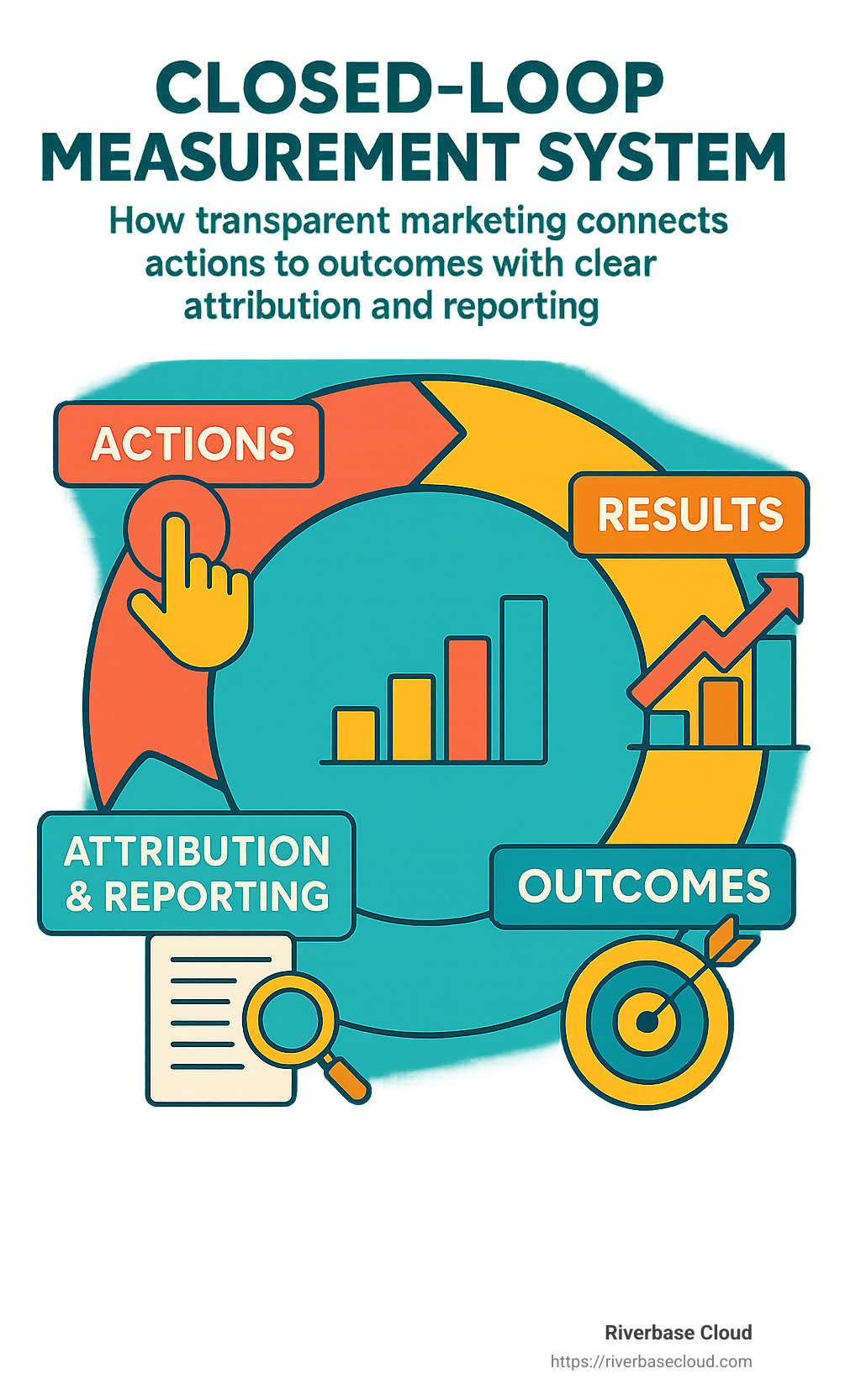
At Riverbase Cloud, our performance accountability includes regular reporting, clear attribution models, and honest assessments of what's working and what isn't. We believe that transparency about performance—both successes and challenges—builds stronger client relationships.
Measuring the Impact of Transparent Marketing Solutions
Measuring the impact of transparent marketing solutions requires looking beyond traditional marketing metrics to include trust indicators and long-term value measures.
Key metrics include:
Return on Investment (ROI): Clear attribution models allow for more accurate ROI calculations. This includes both immediate returns and longer-term impacts.
Customer Lifetime Value (CLV): Transparent marketing often leads to stronger customer relationships and higher lifetime value. Tracking CLV helps quantify this impact.
Sentiment Scores: Monitoring brand sentiment through social listening, reviews, and direct feedback helps measure the trust-building effects of transparency.
Conversion Rate Improvements: As trust increases, conversion rates typically improve. Tracking these improvements helps quantify the value of transparency.
Reduced Customer Acquisition Costs: Transparent marketing often leads to more efficient acquisition through stronger word-of-mouth and higher conversion rates.
Our dashboard analytics at Riverbase Cloud provide comprehensive visibility into these metrics, helping clients understand both the immediate and long-term impacts of their transparent marketing efforts.
Tools & Technologies Powering Transparency
Behind every successful transparent marketing solution is a powerful tech stack that makes openness not just possible, but practical. The good news? These tools have come a long way in recent years.
Clarity Diagnostics offers what they aptly call "marketing diagnostics for leadership" – think of it as a health check for your marketing efforts. Their platform has helped real businesses see real results, with some beta clients experiencing dramatic improvements in lead generation and revenue growth. It's like having x-ray vision into your marketing performance.
For businesses working with affiliates, TraceAd Commerce has been a game-changer. Instead of juggling multiple tracking pixels (and the headaches that come with them), their single tracking code simplifies everything. This means clearer data and more accurate commission payments – no more affiliate disputes over who deserves credit!
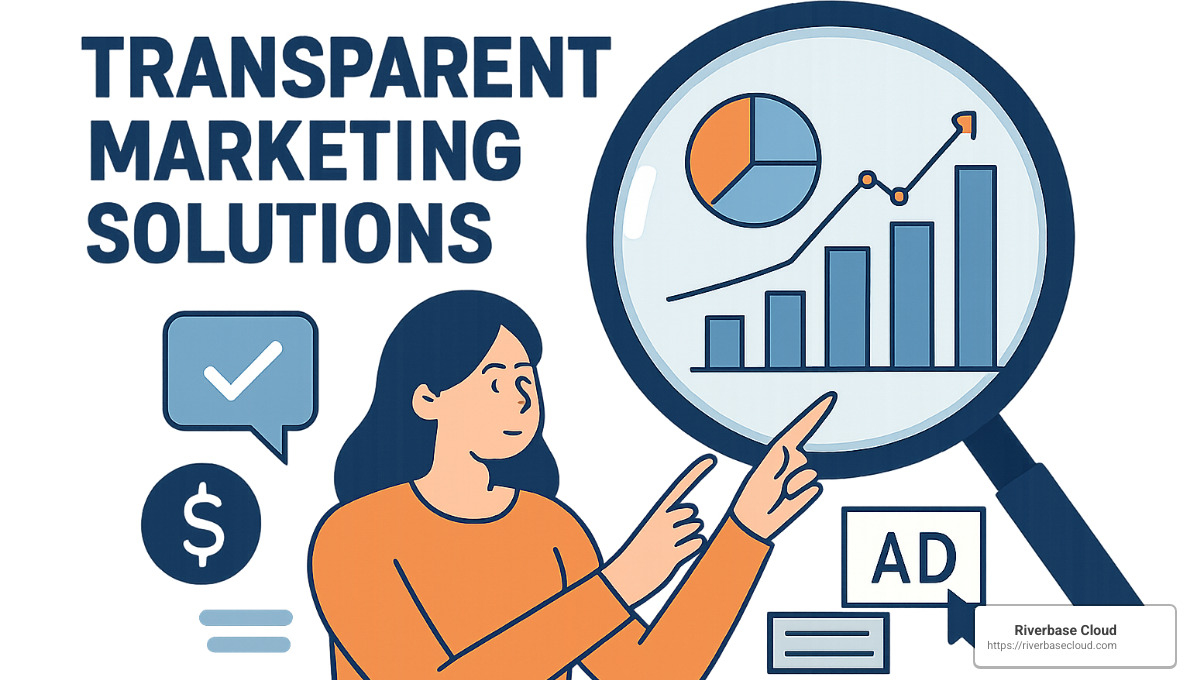
Privacy concerns aren't going anywhere, which is why GDPR Cookie Plugins have become essential tools in the transparency toolkit. These plugins don't just help with compliance – they actively demonstrate your commitment to being upfront about data collection practices. Your visitors appreciate knowing what data you're collecting and how you'll use it.
AI optimization tools are bringing daily campaign improvements while maintaining that crucial human touch. The best ones don't just make changes – they explain why those changes make sense, keeping the "black box" of AI wide open.
For those venturing into Web3 marketing, on-chain attribution platforms like Addressable are providing full cross-device attribution from traditional marketing all the way through blockchain interactions. One client reportedly cut their research time by 90% when analyzing NFTs and gaming projects – that's efficiency through transparency!
Data clean rooms are a significant advancement in transparent marketing technology. These secure environments enable companies to collaborate and analyze data while maintaining strict privacy controls. By allowing insights to be shared without exposing sensitive information, data clean rooms help marketers build trust and comply with evolving privacy standards.
Selecting the Right Stack
Choosing the right technology for your transparent marketing solutions isn't just about features – it's about finding the right fit for your specific business needs.
Scalability should be at the top of your checklist. The solution you choose today needs to grow alongside your business tomorrow. Will it handle increasing data volumes without breaking a sweat? Can it adapt to more complex marketing strategies as you evolve?
Integrations matter tremendously. Your marketing tools, CRM system, and analytics platforms should talk to each other seamlessly. When systems connect properly, you get that coveted 360-degree view of performance that true transparency demands.
Compliance capabilities are non-negotiable in today's regulatory environment. Your tech stack needs to support current privacy regulations like GDPR and CCPA while being flexible enough to adapt to whatever comes next. The regulatory landscape keeps changing, and your tools need to keep up.
Finally, consider your team's skills and capacity. Some platforms promise "no training, no report rearranging, no build out" simplicity, while others require more technical expertise. Be honest about what your team can handle – the most powerful tool in the world won't help if no one can use it effectively.
At Riverbase Cloud, we've carefully curated technologies that deliver powerful results without overwhelming complexity. Our Managed-AI approach means you get cutting-edge tools with human expertise guiding the way. We believe technology should serve your business goals, not create new headaches – that's transparency in action.
Challenges & Misconceptions to Overcome
Let's be honest—adopting transparent marketing solutions isn't always a smooth journey. Many businesses hit roadblocks along the way, but understanding these challenges can help you steer them more effectively.
One of the biggest problems we see at Riverbase Cloud is the fear of sharing too much. Many clients worry that being transparent means giving away their secret sauce or competitive edge. But there's a significant difference between helpful transparency and revealing your entire playbook. The most successful transparent businesses share what builds trust while keeping truly proprietary information protected.
"But won't my competitors see what I'm doing?" This concern comes up in almost every conversation about transparency. While there's some truth to this worry, we've found that the trust advantage you gain with customers almost always outweighs whatever insights competitors might glean. Plus, implementing your strategy still requires execution—knowing what you're doing doesn't mean others can do it as well as you can.
The resource question is another common stumbling block. Yes, setting up transparent systems requires some upfront investment in technology, processes, and sometimes a shift in company culture. But as our client data consistently shows, these investments typically deliver positive returns through improved customer trust and operational efficiency. One client actually reduced their customer service costs by 23% after implementing transparent reporting—fewer confused customers meant fewer support tickets.
For businesses in heavily regulated industries like healthcare or finance, legal constraints can seem like impossible barriers to transparency. But even here, being open about these limitations themselves can build trust. When you explain why certain information can't be shared rather than simply withholding it, customers appreciate your honesty.
Let's bust some common myths about marketing transparency:
Myth: Transparency means sharing absolutely everything. Reality: Strategic transparency focuses on what truly matters to customers. Nobody needs to see your internal Slack arguments about the company logo.
Myth: Transparent pricing means you need to be the cheapest option. Reality: Transparency is about clarity, not necessarily low prices. Premium pricing works perfectly well with transparency when you clearly communicate the value customers receive.
Myth: Transparency only matters for consumer-facing businesses. Reality: B2B relationships can benefit even more from transparency, especially in complex sales cycles with multiple stakeholders and long-term partnerships.
At Riverbase Cloud, we've guided dozens of businesses through these challenges by implementing transparent marketing solutions that strike the right balance between openness and strategic protection. We recognize that transparency exists on a spectrum—it's not an all-or-nothing proposition.
Want to learn more about building trust through transparency? Our resource on Building a Strong Brand Reputation: Strategies and Insights dives deeper into how transparency supports long-term brand value.
Frequently Asked Questions about Transparent Marketing & AI
What's the first step toward adopting Transparent marketing solutions?
Starting your transparency journey doesn't have to be overwhelming. Most businesses find success by beginning with a simple audit of their current practices. Take a look at how you communicate pricing to customers, which of your processes are visible versus hidden, how you measure and report performance, and what customer data you collect (and how you use it).
Once you've completed this review, the path forward becomes clearer. You'll spot the biggest transparency gaps and can prioritize fixing those first. Many of our clients find that improving pricing transparency delivers quick wins that build momentum, while enhancing performance accountability might require more substantial system changes.
At Riverbase Cloud, we typically recommend starting with a free consultation to assess your current transparency level. We'll help identify the most impactful improvements you can make right away. Our Managed-AI solutions are designed to slide right into your existing systems while making everything more transparent at every step of the way.
How do I balance transparency with proprietary data protection?
This is probably the question we hear most often, and it's a good one! The answer isn't about sharing everything—it's about sharing the right things.
Think about your information in two buckets:
Customer-facing information like pricing, general processes, and performance metrics should typically be transparent. This is what helps customers make decisions and build trust in your business.
Proprietary methods, formulas, and specific techniques can remain your secret sauce while still explaining their general purpose and value to customers.
For example, at Riverbase Cloud, we're completely open about using AI for content optimization without revealing our specific algorithms. We clearly explain our pricing structure without disclosing our internal cost margins.
The question that guides us is simple: "Would sharing this information help customers make better decisions or trust our business more?" If the information primarily benefits competitors without adding customer value, it probably doesn't require transparency.
Which KPIs best prove transparency is improving performance?
When clients ask how they'll know if their transparent marketing solutions are working, I point to several key indicators that tell the story best.
Trust metrics like customer satisfaction scores and Net Promoter Score (NPS) often show the first signs of improvement. Watch for conversion improvements too, especially with first-time customers, as these often signal growing trust.
Many businesses are surprised to see their sales cycles shorten as transparency reduces customer uncertainty. Your customer retention numbers should climb as well, suggesting stronger trust-based relationships are forming.
An interesting pattern we often see is reduced price sensitivity—as trust increases, customers focus more on value than on getting the lowest possible price. And don't overlook the power of word-of-mouth growth, tracked through referrals and organic mentions.
The most compelling evidence combines these hard numbers with actual customer feedback. When customers tell you directly that your transparency influenced their decision to work with you, that's gold. These stories provide rich context for all those quantitative improvements you're seeing.
At Riverbase Cloud, we've found that businesses who accept transparent marketing solutions consistently outperform their more secretive competitors in the long run. The trust advantage simply compounds over time, creating a sustainable competitive edge that's hard to match.
Conclusion
As we've explored throughout this article, transparent marketing solutions represent more than just a trend—they're a fundamental shift in how businesses build relationships with customers in the digital age. This balanced approach combines ethical practices with practical tools to create lasting competitive advantages that go beyond quick wins.
Marketing is evolving into something more human, more honest. The future belongs to companies that can harness AI's power while maintaining that essential human touch that builds genuine trust. At Riverbase Cloud, this balance forms the heart of our Managed-AI approach. We've seen how automation drives efficiency, but it's the human oversight that creates meaningful connections.
The businesses that will thrive in the coming years won't see transparency as something they're forced to adopt. Instead, they'll accept it as a strategic advantage that sets them apart. Clear pricing that customers can understand, visible processes that build confidence, and performance metrics that prove value—these elements create deeper relationships in markets where trust is increasingly scarce.
If you're considering implementing transparent marketing solutions in your business, it's a journey rather than a destination. Start with an honest assessment of where you stand today. Are your pricing structures clear? Do customers understand your processes? Can they see the real impact of your work? Each step toward greater openness builds valuable trust that compounds over time.
Our dashboard analytics at Riverbase Cloud give you the visibility to track this journey, measuring both immediate impacts and long-term value of your transparency efforts. The data tells a compelling story: when customers trust you, they stay longer, spend more, and become your best advocates.
When consumer skepticism continues to grow, transparency isn't a luxury—it's essential for sustainable success. The real question isn't whether your business can afford to be transparent, but whether it can afford not to be.
The new marketing landscape combines AI's intelligence with human warmth, all built on a foundation of radical openness. We're excited to be part of this positive change, helping businesses steer this new terrain with confidence and integrity. After all, when you have nothing to hide, you have everything to gain.
Ready to see transparent marketing in action? Book a call with our team and find how dashboard analytics can open up full transparency for your business today.
